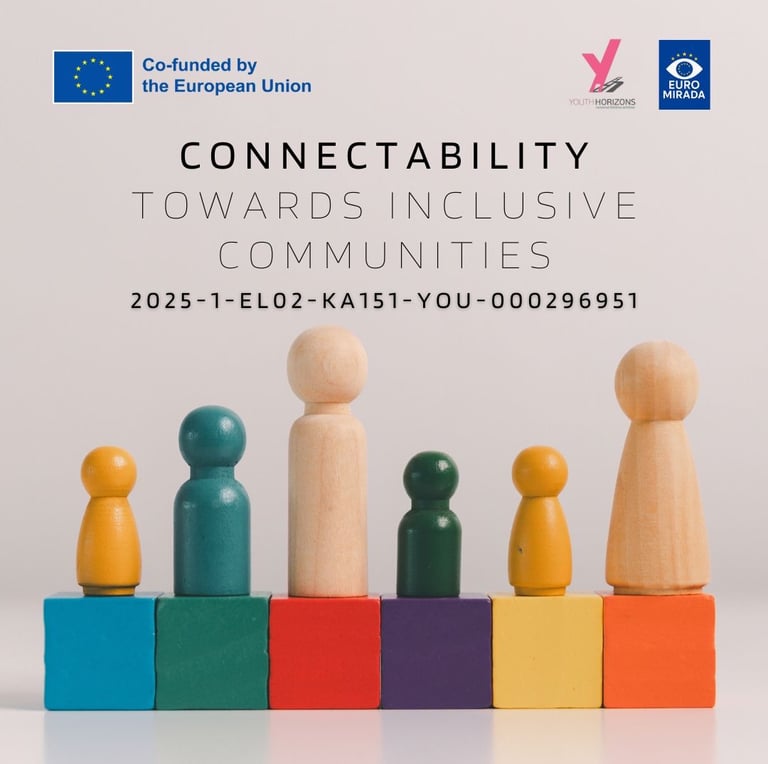ConnectAbility
Towards Inclusive Communities
2025-1-EL02-KA151-YOU-000296951


ConnectAbility
Across Europe, many young people with disabilities still face barriers that prevent them from fully taking part in youth activities.
Often, these barriers don’t come from a lack of will but from a lack of understanding about what disability really means, how different disabilities affect participation, and what inclusion looks like in practice.
Youth leaders and youth workers play a key role in creating spaces where every young person feels valued and included. Yet, many feel uncertain or unprepared when it comes to working with young people with disabilities. They might worry about saying or doing the wrong thing, or about not having the right tools or setup to meet different needs.
This project is born from the belief that inclusion starts with awareness and confidence. It aims to equip youth leaders and youth workers with the right mindset, knowledge, and tools to make their spaces and activities more inclusive and accessible. It will also bring in elements of systemic thinking, helping participants look at inclusion not only at the individual level, but also at how systems, such as families, organisations, policies, and communities, interact and shape young people’s experiences of disability.


Youth workers/ leaders working with young people with a desire to learn more on the area of inclusion.
Be at least 20 years of age
Have a working knowledge of English
Able to implement the skills, knowledge and attitudes acquired during the training
Able to multiply the learning which took place during this project with other members in the organization
Able to implement the tasks given to them before and after the training


Profile of Participants:
Reflect on your understanding of disabilities & inclusion, and how these concepts can be applied to empower young people in your community.
Reflect on what skills or knowledge you hope to gain from this training that can help you strengthen your work with youth or your organisation’s impact.
Consider your own experience in supporting inclusion. What challenges have you observed, and how to address them?


